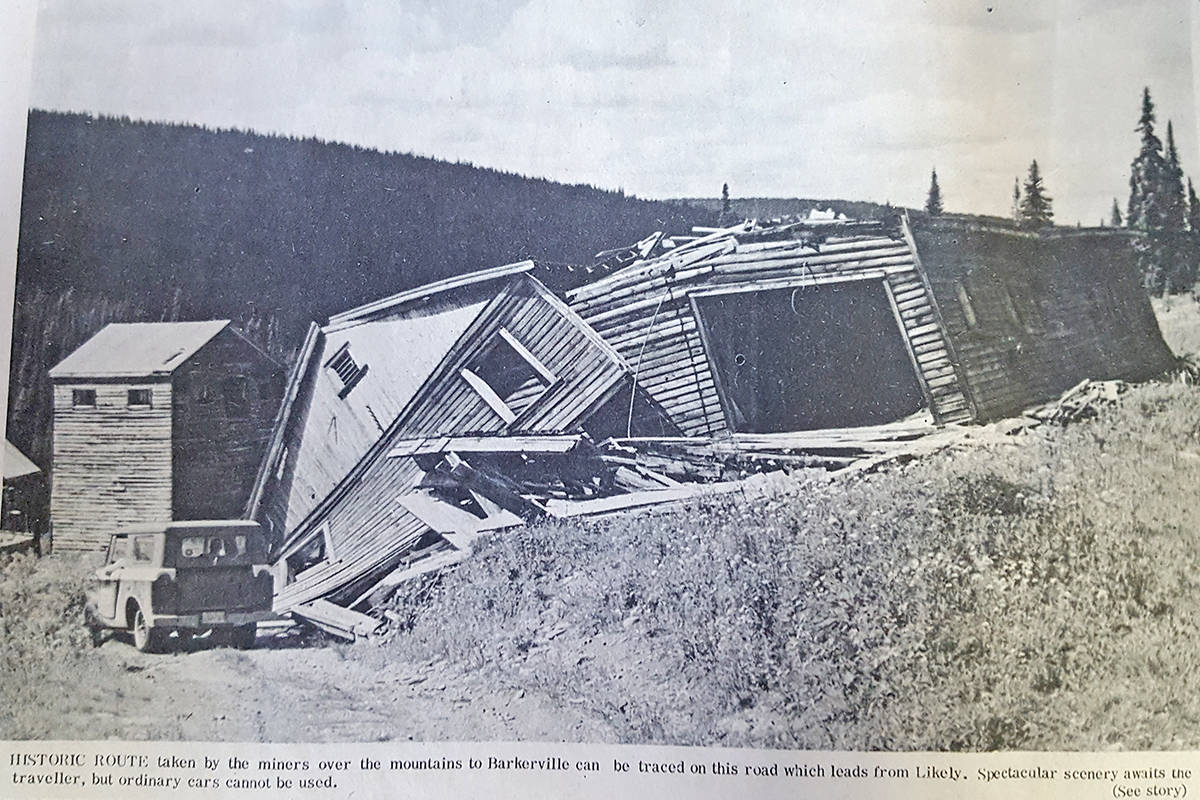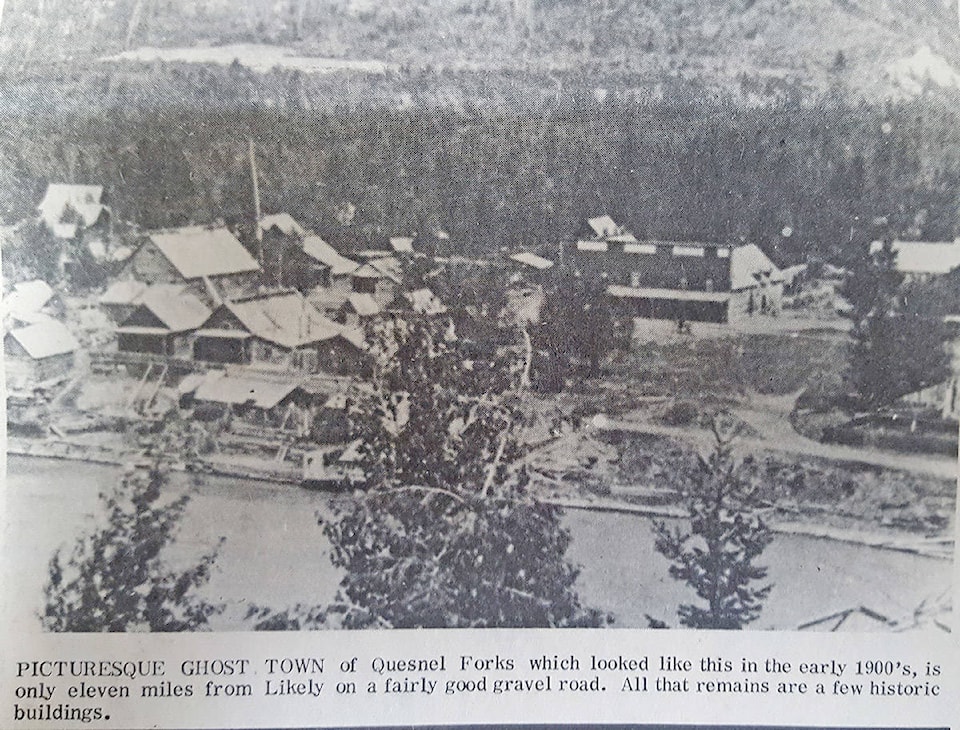Originally published in 1968
For the holiday traveller who wants to try something different, a trip “over the hump” to Barkerville is an exciting adventure.
It’s the Cariboo’s own special “circle tour” … from Likely over the Cunningham Pass, traversing the same historic route taken by the gold-rush miners in 1858.
Some of the most breathtaking scenery is to be seen on the route which climbs to a plateau of 6,200 feet with a view of Mt. Robson in the distance.
During the summer months, the wildflowers are spectacular.
The road is good except for eight miles from Snarlberg to Cariboo Hudson mine, where it deteriorates into what could politely be termed a “truck road.”
Those who wish to make the trip are advised to do so only in good weather.
And you can’t make the trip in an ordinary car.
It’s a trip for two-wheel drives, four-wheel drives and the small European rear-engined cars.
Travellers of the road can stock up with a good meal and gas at Likely before taking off over the hump.
It takes about four hours to get to Barkerville.
Travellers can then continue on and go out by way of Wells and Quesnel.
Capt. Norman Evans-Atkinson of Likely has been a great booster of the “over the hump” trip, and has organized caravans from Williams Lake every summer for the past few years in an effort to publicize the route … and to get the provincial government to do something about the road.
BOXING AT BARKERVILLE
Did you know that the first boxing championship in British Columbia was held at Barkerville in 1867?
A crowd of 1,500 people watched the event and betting was lively long before the two boxers — George Wilson, 33, 175 pounds and Joe Eden, 27, 165 pounds — took their places in the 24-foot ring.
Some $12,000 changed hands, and Ander and Barry’s Saloon held the $1,000 purse.
The Cariboo Sentinel reported: “Eden led off without effect but then planted a stinger on Wilson’s left peeper, drawing the claret …”
At the seventh round, the Sentinel said: “While Eden was falling, Wilson managed to get a headlock on him and administered some well directed blows, at the same time wringing his neck thoroughly.”
In the last round Wilson got a severe blow from Eden and when Eden “went to grass,” Wilson struck him again anyway. Wilson then lost the fight on this foul.
An editorial in the Sentinel said that Wilson fought for glory while Eden fought for the money.
There’s a ghost town in the Cariboo that’s older than Barkerville.
It’s called Quesnel Forks and is located about 11 miles from Likely along a mountain road on the forks of the Quesnel River. One of the most picturesque sites in the country, it was once the most populated town on the mainland boasting some 5,000 people.
All that remains today is a few rotting buildings of logs, two homes and several miners’ shacks.
Little has been documented about this fascinating and somewhat mysterious spot that is hidden from the normally travelled highway.
It has not been preserved like Barkerville. Over everything is dust and cobwebs and an almost tangible feeling of times long past.
It was founded in 1859 when miners came into the country searching for gold, and by the following year there were 20 or more houses, 12 stores, boarding houses, whiskey shops and tents on the ten-acre flat.
Next year there was a jail and government office, and the first of four white women arrived in town.
READ MORE: Ed and Midori Kuziki confront challenges and live life to the fullest
READ MORE: From sandy beginnings, Williams Lake golf course has come a long way
In the same year two enterprising chaps built a 200-foot bridge across the river and charged a toll as people crossed it coming from Williams Lake through Beaver Lake on their way to the gold fields.
In 1866 the town was completely destroyed by fire, and 20 Chinese miners lost their lives.
In 1870 a new strike was made and the town slowly rebuilt, but with miners travelling to the rich goldfields of Barkerville, Quesnel Forks became almost a ghost town.
Then in the 1890s came the Bullion strike, and the ‘Forks became a boom town again. But it was short-lived.
The large Chinese population of 3,500 prior to the fire continued working the nearby creeks, but gradually moved out.
The last sizable group left about 1923.
And Quesnel Forks gradually sank into oblivion.
On a trip to the colorful ghost town you truly walk hand-in-hand with history.

